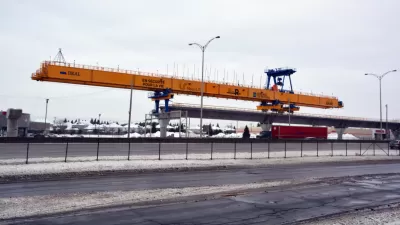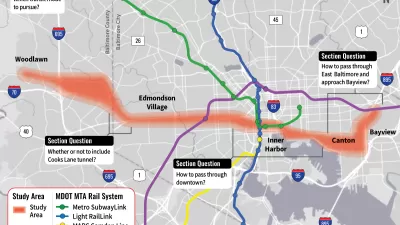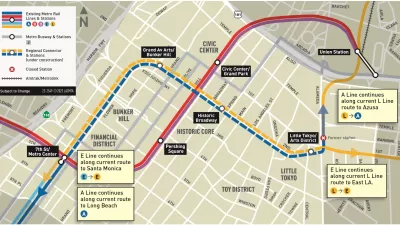The first day of public service on the Réseau Express Métropolitain (REM) light rail route was marred by a closure and delays.

After a weekend of fanfare and celebrations, the Réseau Express Métropolitain (REM) light-rail route opened to the public on Monday, July 30 in Montreal. The new automated, electric light-rail line will serve five stations between Brossard and downtown Montreal’s Central Station with plans for more.
The first day of public service had a major hiccup, however. “But a breakdown put a cramp in the first day the electric light-rail line took paying passengers across the Champlain Bridge,” according to an article by Jason Magder for the Montreal Gazette.
“The problem was caused by a switch that got stuck, so trains were not able to change tracks, REM spokesperson Jean-Vincent Lacroix said.” Magder also reports that three trains were stranded on the Champlain Bridge as service was delayed for 90 minutes. The system worked smoothly over the weekend—120,000 people used the new train route while operating for free over the weekend.
According to a separate article by Antoni Nerestant for the CBC News, the REM is the largest public transit investment in decades for the Montreal region.
“When it's complete, the network will feature 26 stations that span 67 kilometres and connect riders to Montreal's South Shore, the West Island, western Laval and the town of Deux-Montagnes,” explains Nerestant. The first phase, which opened this week, covers the southern portion of the project.
FULL STORY: First day, first delay as REM (sort of) goes into action

Trump Administration Could Effectively End Housing Voucher Program
Federal officials are eyeing major cuts to the Section 8 program that helps millions of low-income households pay rent.

Planetizen Federal Action Tracker
A weekly monitor of how Trump’s orders and actions are impacting planners and planning in America.

Ken Jennings Launches Transit Web Series
The Jeopardy champ wants you to ride public transit.

California Invests Additional $5M in Electric School Buses
The state wants to electrify all of its school bus fleets by 2035.

Austin Launches $2M Homelessness Prevention Fund
A new grant program from the city’s Homeless Strategy Office will fund rental assistance and supportive services.

Alabama School Forestry Initiative Brings Trees to Schoolyards
Trees can improve physical and mental health for students and commnity members.
Urban Design for Planners 1: Software Tools
This six-course series explores essential urban design concepts using open source software and equips planners with the tools they need to participate fully in the urban design process.
Planning for Universal Design
Learn the tools for implementing Universal Design in planning regulations.
Ada County Highway District
Clanton & Associates, Inc.
Jessamine County Fiscal Court
Institute for Housing and Urban Development Studies (IHS)
City of Grandview
Harvard GSD Executive Education
Toledo-Lucas County Plan Commissions
Salt Lake City
NYU Wagner Graduate School of Public Service





























